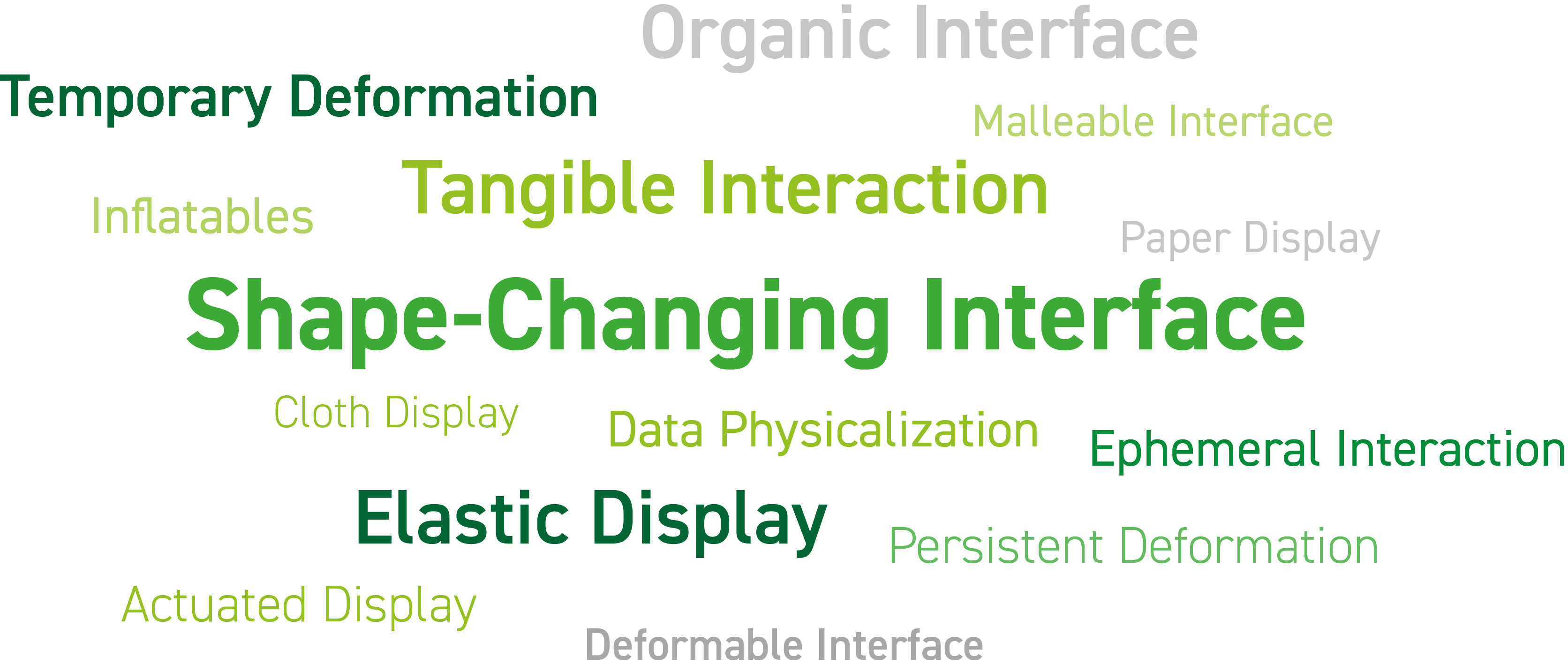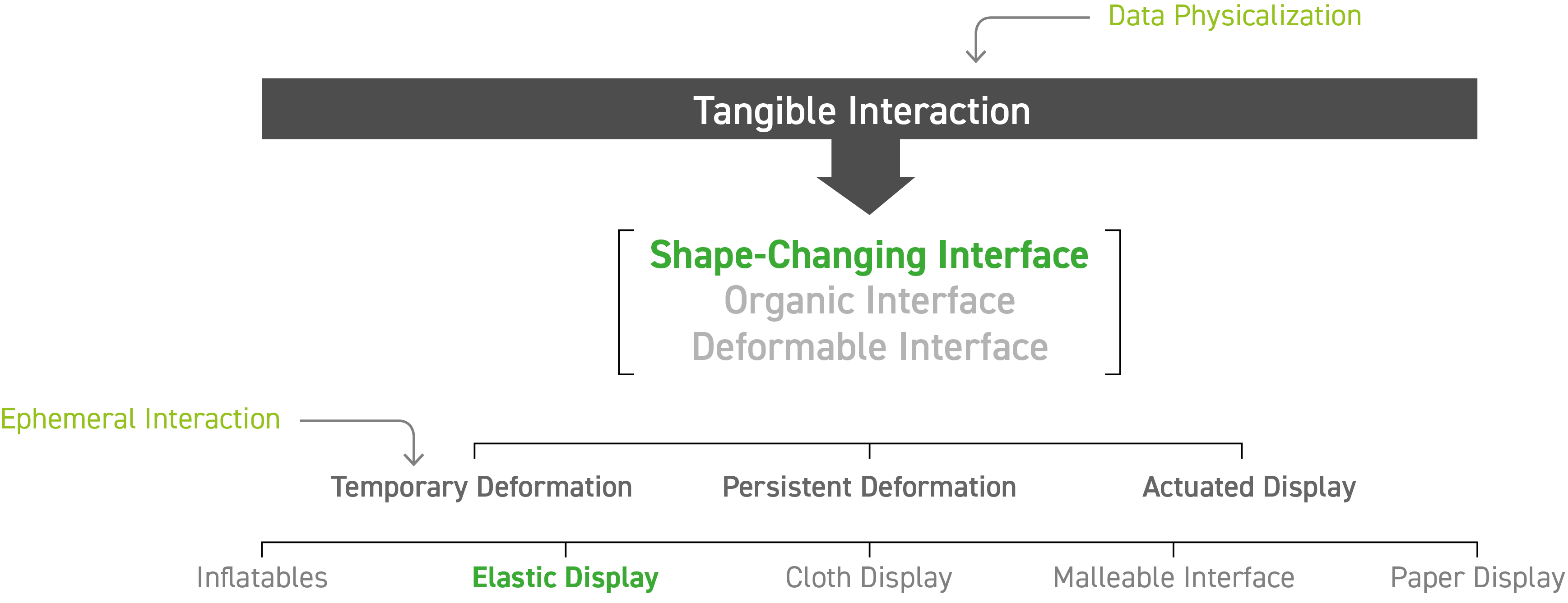Terminology
Table-of-contents

The terminology in the research field of Shape-Changing Interfaces is very heterogenous, reflecting the diversity and also fragmentation of the topic. Some of the terms are influenced by a technological point-of-view, some strive to express the characteristics of the interaction, some are influenced by philosophical concepts.
Taxonomy
Our approach for a well-ordered conceptual apparatus places the term Tangible Interaction in the center as fundamental concept serves as a common frame to which all other aspects can be related. Tangible Interaction describes research related with specific interaction design concepts as well as specific types of user interfaces.
Shape-Changing Interfaces describe user interfaces in the area of Tangible Interaction, including concepts such as Organic Interface or Deformable Interface. On the conceptual side, these interfaces can be divided into interfaces with Temporary Deformation or Persistent Deformation or Actuated Displays.
Elastic Displays fit into the first category. The term Ephemeral Interaction describes a concept that is closely related to the temporality of the interaction. Data Physicalization again is a concept that serves as one of the core ideas of Tangible Interaction

Shape-Change Continuum
In regard to the deformation, interactive displays can be sorted into a Shape-Change-Continuum (similar the Reality-Virtuality-Continuum by Milgram [1]), starting from traditional rigid (touch) screens, continuing with devices that utilize different modalities of shape change for input.
Elastic Displays are devices that also start to use deformation for outputting information (either with the natural passive haptic feedback provided by the surface tension of the fabric or by augmenting the Elastic Display with vibrotactile feedback [2, 3]).
Finally, Actuated Displays use shape-change capabilities for the full range of input and output.

References
[1] Milgram, P., Takemura, H., Utsumi, A., and Kishino, F. (1994): Augmented Reality: A Class of Displays on the Reality-Virtuality Continuum. Proc. SPIE 2351, pp. 282–292. DOI: 10.1117/12.197321
[2] Müller, M. and Kammer, D. (2022): Augmenting Elastic Displays with Active Vibrotactile Feedback. In: Carola Marky, Uwe Grünefeld and Thomas Kosch (Ed.): Mensch und Computer 2022 - Workshopband. Mensch und Computer 2022, 15. Workshop Be-greifbare Interaktion (MCI-WS04). Darmstadt, Germany, 04.09.2022. Bonn, Germany: Gesellschaft für Informatik e. V. (GI). DOI: 10.18420/muc2022-mci-ws04-359
[3] Müller, M., Ramian, A., Wittchen, D., Freitag, G. and Kammer, D. (2023): Exploring Dynamic Vibrotactile Feedback for Layer-based Interaction on Elastic Displays. In: Markus Stolze, Frieder Loch, Matthias Baldauf, Florian Alt, Christina Schneegass, Thomas Kosch (Ed.): Proceedings of Mensch und Computer 2023. Mensch und Computer 2023: Building Bridges. Rapperswil, Switzerland, 03.09.2023 - 06.09.2023. New York, NY, USA: ACM (ACM Digital Library), pp. 406–411. DOI: 10.1145/3603555.3608534
